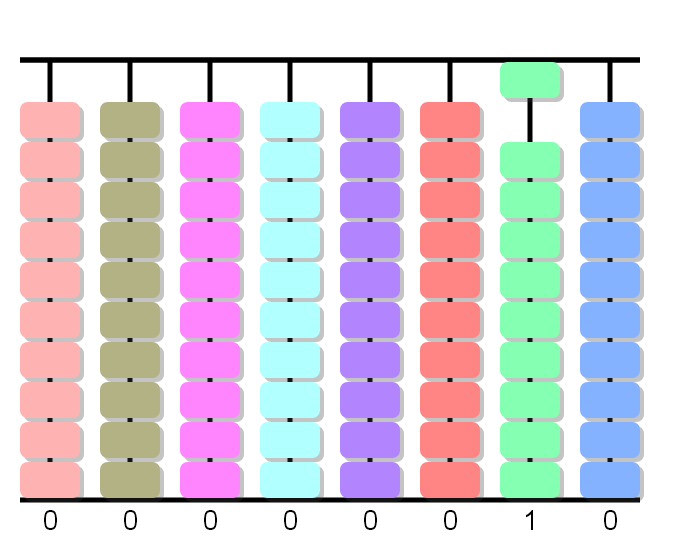
This is a basic version of the abacus for beginers, based on the decimal system.
It can be used from very early ages to consolidate the concept of quantity, manipulate the arithmetic and get a space vision of the set of integer numbers.
The quantity defined by the abacus is given by the beads moved to the top.

The beads in the left-hand column are greater than those in the right-hand column. One unit in the left column is always ten times as large as one unit in the adjacent column on the right.
Thus, if we assume that the first column on the right-hand side of the frame to be the units' place, one bead in the first column will be worth one unit; one in the second column will be worth ten units; one in the third column will equal 100 units, etc.


Before using the abacus all the beads should be placed the lower side. This is the neutral position.

When in one column all the beads are moved to the top, one bead on the left column may be used and the above ten beads returned to neutral.


It is always advisable, especially for a beginner to check the results of a computation. For this purpose one of two methods may be adopted:
Addition and subtraction and also multiplication and division may be conducted to verify each of its opposite process. Thus, an example on addition may be checked by subtraction and vice-versa; and the same is true with multiplication and division.
But the general method used by the abacists is to repeat the work.
In this web page you can practice with the abacus clicking on the exercises' link, where you will also check your results by clicking on the red arrow.
Click in this link to practice your skills.
